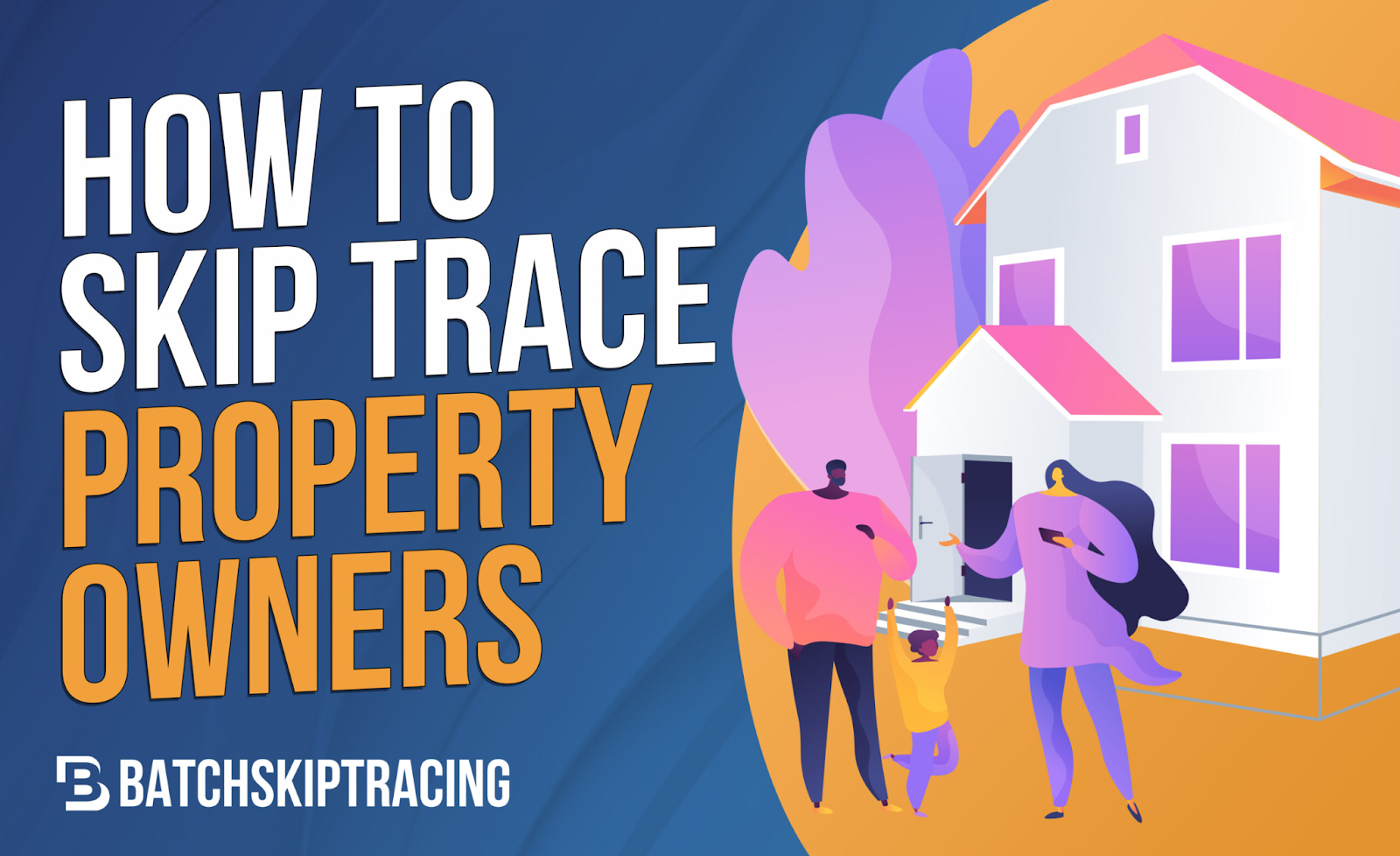Skip tracing in real estate involves employing various investigative techniques to locate property owners who might be interested in selling their properties. This method is crucial for real estate agents, wholesalers, and investors, as it helps them find off-market deals that are not publicly listed. These off-market properties often present lucrative opportunities due to reduced competition. Additionally, property management professionals and long-term investors use skip tracing to track down tenants or prospective tenants, ensuring they can maintain or fill vacancies efficiently.
Step-by-Step Guide to Real Estate Skip Tracing
1. Finding the Property Owner’s Name
The initial step in the skip tracing process is to determine the name of the property owner. This can be accomplished through several methods:
- Real Estate Map Search Apps: These applications are designed to provide quick access to property owner information by simply clicking on a property on a digital map. They are particularly useful for real estate professionals who need to gather information rapidly.
- Pre-Foreclosure Lists: Properties at risk of foreclosure are often listed in pre-foreclosure lists. Owners of these properties might be more motivated to sell quickly to avoid foreclosure, making these lists valuable resources for investors.
- Public Records of Property Deeds and Titles: Public records are a treasure trove of information. By accessing deeds and titles, you can find the names of property owners. These records are typically available at local government offices or online databases.
- Tax Lien Lists: Properties with unpaid taxes are listed in tax lien lists. These properties might belong to owners who are struggling financially and therefore may be more inclined to sell.
After obtaining the property owner’s name, the next crucial step is to locate their contact information to initiate communication.
2. Using Skip Tracing Websites
Many real estate investors opt for skip tracing websites to find property owners’ contact details. These platforms aggregate data from various sources to provide comprehensive contact information. One popular option is Batch Skip Tracing, which is favored for its cost-effective pricing model. Users only pay for the results they receive, making it a viable option for both small-scale and large-scale investors. Typically, these websites deliver detailed reports within 48 hours, streamlining the process of reaching out to potential sellers.
3. Utilizing Social Media Networks
High-quality skip tracing websites sometimes include social media profiles in their results. If such information is not provided, investors can manually search for property owners on social media platforms. Although this method is free, it can be time-consuming. By searching each social platform for public accounts under the property owner’s name, you can potentially find additional contact information such as phone numbers or email addresses, allowing for direct communication.
4. Skip Tracing Through Google
Google serves as a powerful tool for finding contact information by indexing public social media profiles, personal and professional websites, and online directories. This broad search capability allows users to gather information from numerous resources simultaneously. However, Google only searches the surface web and active social media platforms, which means it may not uncover as much information as a dedicated skip tracing service. Nonetheless, it remains a valuable, no-cost tool for initial research.
5. Offline Skip Tracing Techniques
Traditional, offline skip tracing techniques can also be effective:
- Hiring Private Investigators: Private investigators have access to local resources and can conduct interviews with neighbors or past employers to locate individuals. This method, while potentially costly, can yield highly accurate results.
- Personal Investigation: This involves personally investigating leads, but it is important to note that many states require a private investigator’s license for certain types of skip tracing activities. Proceed with caution and ensure compliance with local laws.
Choosing the Best Skip Tracing Option
When deciding which skip tracing method to use, consider the following factors:
- Labor Involved: Assess the time and effort required for each method. Some methods are more labor-intensive than others, which can impact your efficiency.
- Costs: Compare the costs associated with paid skip tracing websites, hiring a private investigator, or conducting the research yourself. Each option has different cost implications, and the best choice will depend on your budget and the scope of your needs.
- Quality of Information: Ensure that the service you choose provides up-to-date information. Reliable data sources include current pre-foreclosure lists, accurate property records, and active phone numbers from directories. The quality of information can significantly impact your success in contacting property owners.
Using a paid skip tracing site or app is generally the most efficient option, offering a balance between effort and cost. Ensure that the service you select has access to reliable and current data to maximize your chances of success.
By mastering and employing these skip tracing techniques, you can gain a significant competitive edge in the real estate market, particularly with off-market properties. With fewer competitors pursuing the same leads, you increase your chances of securing profitable investments.





